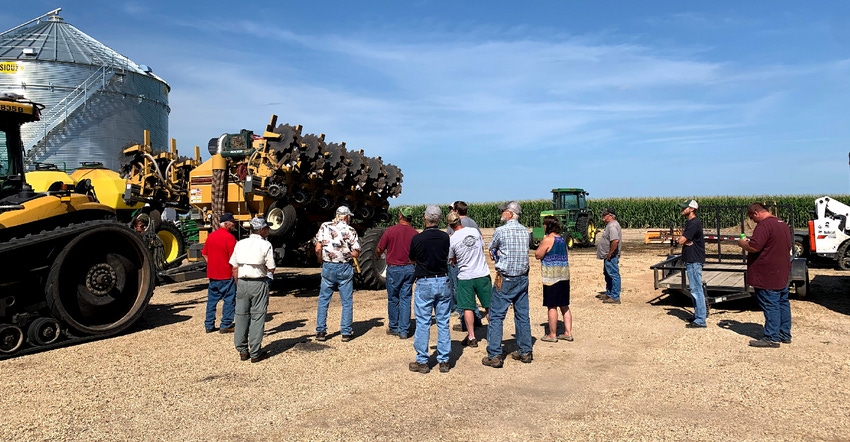January 8, 2021

In the Morris and Appleton areas of western Minnesota, about a dozen farmers have teamed up to learn about improving soil health and are finding ways to do it.
Their effort fits in with recent scientific studies about water quality in the Pomme de Terre River Watershed, and cooperation among the six counties it touches.
A Minnesota Pollution Control Agency (MPCA) report on the last half of more than 20 years of water quality monitoring in the Pomme de Terre Watershed notes little change in water quality. However, climate change portends rising temperature and flows, which could detract from water quality. The report specifically notes that “increased rainfall and temperature can worsen existing water quality problems. More precipitation and reduced snow cover can increase soil erosion, pollutant runoff and streamflows.”
Flows in the Pomme de Terre River and its tributaries are increasing as a result of both artificial drainage and increased precipitation. Increasing streamflow can create more channel erosion and possibly more pollutant loading, even if pollutant concentrations are stable. Nitrate-nitrogen showed a statistically significant change, increasing about 11% each year.
That’s where conservation practices and improving soil health come in. “Landowners have installed hundreds of best management practices to improve water quality, but many more are needed,” according to the Pomme de Terre River Watershed Water Assessment and Trend Update. The report feeds into a watershed plan generated by the six counties working with their soil and water conservation districts and the Minnesota Board of Soil and Water Resources.
In 2020, the Pomme de Terre River Association Soil Health Team met three times and held a field day to share information about soil health, techniques, equipment and funding. The team finds support to take risks in a field facing many challenges, from equipment costs to social acceptance.

“It’s a slow process,” says Paul Groneberg, a farmer, crop consultant and soil health team member. “Change comes hard, and mentoring is a big thing. One of the biggest benefits of the team is the interchange of ideas.”
“We are encouraged by the initiative shown by these farmers to address the issue on their own,” says Andy Albertsen, manager of the Swift County SWCD. “We are there to help with technical and financial resources.”
What is healthy soil?
“Soil is like any living thing. The more you feed, protect and nurture it, the more productive it can become,” says Wayne Cords, MPCA south section watershed manager and a farmer. “Fail to do these things, and it withers and dies, much like a plant that does not receive water and nutrients.”
Soil is alive with countless microbes essential for a healthy, productive landscape. One teaspoon of healthy soil is said to contain more than a billion microbes — bacteria, fungi and protozoa — not to mention earthworms and other nematodes.
“One of our main objectives is to get more education and more farmers involved,” Groneberg says. A video from a Sept. 9 field day was discussed about getting posted on the University of Minnesota-Extension webpage.

With climate change clearly occurring, Groneberg says reduced-tillage practices, cover crops and other soil health practices will help by improving infiltration. More vegetation can help sequester carbon.
“These soil health practices that are already being implemented have a positive cascading effect,” Albertsen says. “Every acre matters and these producers, continue to learn and adapt to changing conditions each spring and fall. They are creative, persistent and amazing problem-solvers.”
An MPCA report estimates the impact of 21 different agriculture best practices on greenhouse gas emissions. For example, grass buffers can reduce greenhouse gas emission by as much as 0.77 ton per acre, according to the report.
Along with education and support, financial incentives can help make the change from conventional to a soil health conservation system. Initially, the changeover involves two sets of equipment, Groneberg says, and “cost share does help.” However, once the new system is established, there could be less cost. “It’s important to measure net return per acre, and not just yield,” Groneberg says.
Source: MPCA, which is solely responsible for the information provided and is wholly owned by the source. Informa Business Media and all of its subsidiaries are not responsible for any of the content contained in this information asset.
You May Also Like




